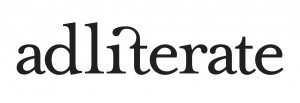5. Real

In a world of the fake, real is a powerful idea.
Real means genuine. Real is a connection to and a bond with something that actually exists or has happened.
And yet, all too often marketing and brand building have a slim relationship with the real and authentic. Indeed, many of the beliefs and conversations about a brand and the world around it are steeped in a combination of corporate wishful thinking, fanciful beliefs and false assumptions. And perspectives on the world manufactured to give agencies, consultancies or research companies a ‘unique’ perspective on the world. One that they can sell.
That’s one of the reasons that I hate generational marketing. That the habit of bucketing of huge numbers of different people that are united by nothing more than their birth date, into walloping great groups signified by a letter towards the end of the alphabet. Something entirely manufactured, profoundly lazy and nowhere near the same hemisphere as real.
Recently we ran a massive sweep of online conversations amongst young people and far from the obsessions that we are told younger generations are posessed by, their preoccupations were about housing, employment, money, travel and entertainment. You know the things that you would expect from young people starting to explore their world for the first time but characterised by very low levels of income – the things that have preoccupied the young forever.
There is purpose to this whinge though, because good brand strategy needs to be built on something real, something that has actually happened or exists. Something that you can touch and feel and know.
To be clear, real is not the same as universal. To know something is real doesn’t mean its true of everyone and everything. I know that’s weird but its really important. Truth wants to be universal, real simply wants to be authentic. I would prefer to know something real about a single individual in this world than a load of old bollocks about everyone.
So when you are looking for the building blocks of your strategy try and get in touch with the real, rather than copy and paste the manufactured tropes that wash through the research reports, trend documents and false assumption that are winking up at you from your laptop.
Real can come from many places. And the first place is you.
People like us – brand strategists – live in bubbles, everyone does. And no one’s experiences are remotely representative of anyone else. But when you know or feel something yourself, through your direct experience, you can at least proclaim that to be real.
When I was working on the ‘fixer’ brand strategy for Direct Line, we were thinking about the personality of the brand. At the time it was believed that insurance companies should be more empathic, a lifetime of poor customer service meant that these companies often wanted to make up for lost hugs they felt they owed people. It was the inexorable direction of travel for any insurance brand.
Then I went to Vietnam and had all my bags stolen.
Or rather, while at a workshop in Vietnam for an entirely different client, I was mugged on the street and had my phone stolen by someone on a scooter. Shit happens, and anyway it was my own stupid fault for using a phone on the street. So I walked back to my hotel to pick up my bags and use my laptop to closedown my iCloud account and email my wife, who I had been speaking to on the phone. But in a classic example of correlation not causation, all my bags had been stolen from the hotel’s concierge too.
At that point my resilience broke down, I needed help and there were two types on offer. One person empathised with my plight, saying this had happened to them before and they knew exactly what I was going through – nice but pointless. Someone else just stepped in and sorted out my immediate problem by giving me their phone and their laptop so I could phone my wife and protect my identity. That was what I really needed in that moment of minor crisis, effective action not a shoulder to cry on.
And it turned out that this is how many people feel when the shit hits the fan, that they just want someone to sort it out? Far from being a special kind of person with a totally individual persoctive on the world, I was profoundly un-special.
This personal experience was one reason that ‘effective action’ became central to the Direct Line brand idea and personality. No one made it up, its wasn’t the output of an over enthusiastic brainstorm or the result of some lacklustre research groups.
Revealing somethin real is one of the reasons that your life should be the first place you go searching for insight because, unrepresentative though you are, the one thing you can say is that those experiences are authentic. And it may well be that, like me, you aren’t that special after all.
This is not a process by the way. It’s simply one way to feel the real amongst many others – data from many sources, research of many types and simply seeing, really seeing the world around you. All these can help you reveal the real, if they are handled carefully.
Data is an increasingly wonderful conduit to the real because it offers a perspective on human behaviour unmediated by the observer. In it lies what people actually do and how they actually behave. Behavioural data mind, not the quantification of opinion and claimed activity, which has its place on the journey but always comes with a reality health warning.
Qualitative research can be hugely powerful too. No matter how I might despair at the proceedings of the average group discussion, I can with hand on heart say I have never undertaken or observed a single research conversation where I didn’t walk out with a glimpse of something real. Whether or not it was related to the subject under discussion.
I think what unites such seemly opposed sources of reality is the lack of focus. The most useful data is simply the snail trail of humanity, the recording of which we drop into and observe without framing the results we are interested in seeing. While the most useful qualitative research is that which seeks to understand what what we don’t know we don’t know and is therefore only lightly structured.
So please abandon focus, soften it, look away from the pin prick of light and see what you find. I didn’t design a research methodology to see what would happen if all my worldly possessions were nicked in Ho Chi Minh City.
A little while ago we did some completely unfocused work with the UK parenting site Mumsnet. Bored with sterile industry segmentations of families and in despair at the way ‘mums’ is regarded as a distinct and targetable group, we were trying to get to grips with how women with children really self identify.
So we scraped the conversations happening on Mumsnet to see how contributors chose to self identity, the communities and conversations that they were naturally drawn to and that clearly meant something significant to them. We isolated 66 different parenting identities from the data, like first time parents, rural parents, LGBTQ+ parents, adoptive parents, parents of multi-ethnic children, those with children with special needs, parents of twins, and so on.
From there we were able to get closer to those identities by enabling members of a few of them to research their own community and represent the issues, feelings, needs and desires of each group. No mediation at any stage, no attempt to organise the world from our perspective. Jsut raw, and real stories and experiences.
There is a wonderful podcast episode from Malcolm Gladwell in which asks why country music makes us cry but rock doesn’t, I wrote about it here. And the answer lies not simply in the melancholy tunes of country but in the raw reality of stories that it tells. Music that connects with people because they can feel the narrative in a visceral sense as something that has actually happened to someone.
And that is one of the primary aims of any brand strategy. To connect. To connect a brand to a person and vice versa. And if that reality is significant enough, un-special enough then you might just have a winner on your hands.
So when you are beginning to create your brand strategy try and touch the real. Recognise that any source of information and experience – you, those around you, individual customers, groups of customers and every customer – can all be sources of real.
And remember the question you are asking when looking for your starting point is not ‘is this true?’
The question you are asking is, ‘is this real?’
Discover more from
Subscribe to get the latest posts sent to your email.
